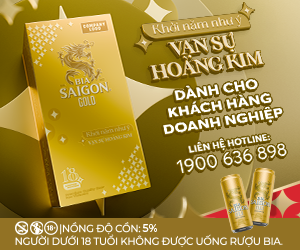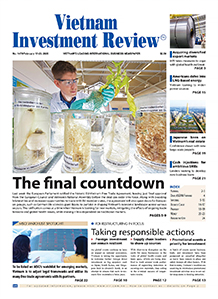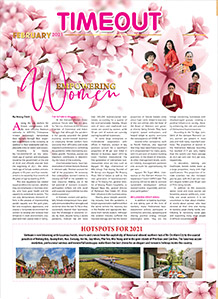Wine securing a stronger foothold in Vietnamese market
Rob Temple, managing director of Sinowine, told VIR’s Nguyen Thu about the region’s complex consumer landscape, the emerging Gen Z influence, and what it takes for wine to secure a foothold in this evolving market.
 |
| Rob Temple, managing director of Sinowine |
What are the most significant challenges and opportunities for private-sector food and beverage players when approaching Southeast Asian markets?
Southeast Asia is incredibly diverse. You have significant variation in food culture, language, economic development, and consumer education, especially when it comes to wine, spirits, and beer. Mature markets like Singapore and Hong Kong have a well-established understanding of these products, but emerging economies are just starting to form their consumer bases.
Urbanisation plays a huge role; Vietnam, for example, has reached nearly 40 per cent urbanisation, leading to improved retail, restaurant quality, and distribution. That in turn is expanding points of sale and access for consumers.
At the same time, new importers and distributors in the market are becoming more professional and better attuned to how consumers behave. You also have a generational divide, as older consumers tend to stick to what they know, while younger consumers are still exploring and open to new experiences.
How do Gen Z trends impact the wine and spirits industry across Asia?
Gen Z presents both a tremendous opportunity and a unique challenge. There are around 600 million Gen Z consumers across Asia. They live in the moment, are impulsive, and prioritise short-term enjoyment. They follow trends quickly and abandon them just as fast. So the challenge is twofold: how to excite them, and how to build something sustainable.
To reach them, the industry must continuously innovate – new products, limited editions, and creative marketing are essential. But building brand loyalty with Gen Z requires more than just novelty. You need emotional connection, storytelling, and authenticity. They want to share experiences and associate products with their lifestyle. Brands need to be nimble, but also emotionally engaging and sincere.
What are the key obstacles facing the wine industry in Vietnam specifically?
Availability is the number one challenge. Vietnam’s market is growing quickly, with a young and increasingly affluent population. But the wine segment is still small, accounting for only around 1 per cent of alcohol consumption, compared to 91 per cent beer and 8 per cent spirits.
Improving distribution, expanding product ranges, and ensuring wines are stored and served correctly are all critical steps.
There’s also a steep learning curve in terms of service and education. Restaurant staff need training, sommeliers need to understand pairings, and importers need to provide a complete service ecosystem. Vietnam is not a monolithic market: Ho Chi Minh City and Hanoi are very different in food, culture, and consumer behaviour. And so local knowledge is key.
How do you see the future of Vietnam’s wine market in comparison with countries like China or Thailand?
I see many parallels. These markets were dominated by beer and local spirits. Over time, especially with health messaging and the emergence of middle-class consumers, wine gained traction.
China even began promoting red wine as beneficial for health, which helped open up the market. Thailand developed a more premium wine culture, especially in Bangkok, and has since evolved to embrace variety and affordability. China took longer but is now producing world-class wines.
I believe Vietnam is on a similar trajectory. In 15–20 years, we could see a much more balanced alcohol market, perhaps even one-third wine, like in Hong Kong today. But it will require long-term commitment and investment.
How do global wine trends apply to Southeast Asia and Vietnam in particular?
Global trends like organic and biodynamic wines, premiumisation, and low- or no-alcohol offerings are growing, but Southeast Asia is still an emerging market. In Vietnam, we’re still in the stage of building wine into everyday culture. The low- and no-alcohol trend might work for beer, but not yet for wine.
We do see growth in white and sparkling wines, especially in the south of Vietnam. That’s a good indicator of consumer maturity, they’re choosing based on taste, not just trend. Premiumisation here is tied to rising affluence, rather than drinking less but better.
Vietnam is forging its own path, driven by a young population and increasing prosperity. The potential is immense, and as more consumers discover wine, the market will expand naturally just like it did elsewhere in the world.
What the stars mean:
★ Poor ★ ★ Promising ★★★ Good ★★★★ Very good ★★★★★ Exceptional
Related Contents
Latest News
More News
- Vibrant Vietnamese cuisine fit for global tastes (June 09, 2025 | 10:42)
- Vietnam can be global hot spot in 2025 (January 29, 2025 | 00:38)
- Promoting tourism and hospitality with sustainability (January 28, 2025 | 09:00)
- Vietnam centres on eco-luxury tourism and hospitality (January 28, 2025 | 02:06)
- Growth prospects for Vietnam’s event tourism in 2025 (January 28, 2025 | 01:18)
- Core values drive success at Marriott (January 24, 2025 | 16:00)
- Hoteliers to prioritise eco-luxury (January 04, 2025 | 09:00)
- Vietnam upscale tourism on the rise for 2025 (December 30, 2024 | 12:03)
- Addressing concerns can shape green hospitality (December 04, 2024 | 10:24)
- Vietnam’s sports economy to lead a new era of development (November 06, 2024 | 16:31)

 Tag:
Tag:




















 Mobile Version
Mobile Version